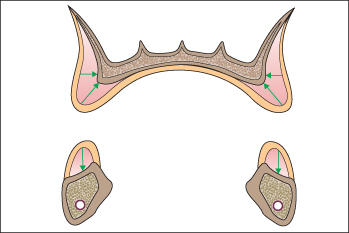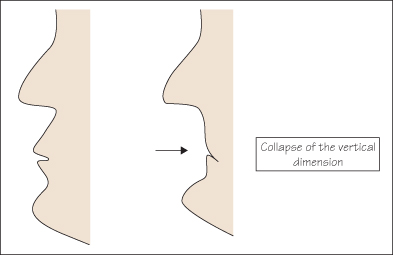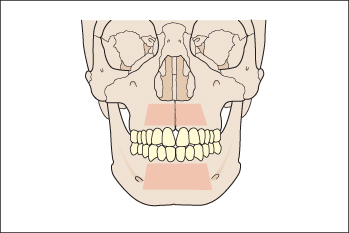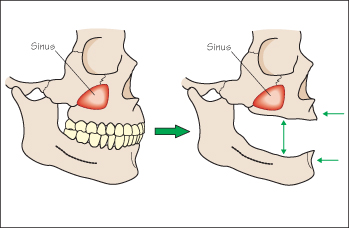28
Treatment planning: fully edentulous patients
Bone resorption is the major problem in completely edentulous patients (Fig. 28.1). The edentulism leads to the loss of orofacial support, facial esthetics, phonetics, and the collapse of vertical dimension (Fig. 28.2). Treatment at the maxilla is more complex than at the mandible, and overdentures and fixed restorations show better success at the mandible than at the maxilla.
Figure 28.1 Modification of jawbone dimensions in the fully edentulous patient.

Figure 28.2 Modification of the orofacial support in the fully edentulous patient.

Surgical Specificities
The anatomical areas where dental implants can be placed in the native bone are often limited (Fig. 28.3). Bone resorption increases the need for surgical bone compensation (Fig. 28.4). Situations where more than six dental implants can be placed in the native bone, either at the mandible or at the maxilla, are rare. Nevertheless, dental implant placement does not differ per se from the standard surgical procedure, except for the fixed prosthesis supported by four implants.
Figure 28.3 Anatomical areas at the maxilla and at the mandible where dental implants can normally be placed in the native bone (shaded areas).

Figure 28.4 Bone resorption in edentulous patients.

A surgical guide is mandatory because of the lack of benchmarks.
One-stage or two-stage approaches can be used. A two-stage approach may be indic/>
Stay updated, free dental videos. Join our Telegram channel

VIDEdental - Online dental courses


